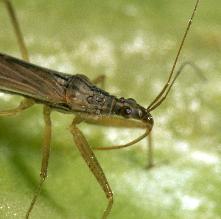 |
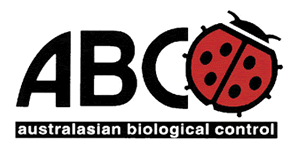 |
||||
 |
 |
 |
|||
Predatory Bugs Bugs are a large group of insects which includes many pests of plants. There are however many bugs that are important predators of other insects. They range in size from the minute Orius to the ferocious Assassin bug. They undergo a gradual metamorphosis usually through five instars in which they shed their skins in a series of molts until adult hood when they develop wings. Unlike beetles there is no pupal stage. Minute Pirate Bugs - Orius spp. Primary Hosts: moth eggs, aphids and thrips Key identifying characteristics: Nymphs are yellow-orange or brown tear shaped (top right). Orius feed on Heliothis eggs, thrips and may feed on Dried Fruit Beetle eggs and larvae. They are first encountered in the tassels and then in the silks. Significance: Orius are now mass reared - More info Big Eyed Bugs - Geocoris spp. and Germalus spp. Primary Hosts: Soft bodied insects and mites Key identifying characteristics: They are broader and slightly larger than Orius at about 3 mm long and distinguished by their very large eyes. Significance: These bugs are not nearly as abundant as Orius in the Lockyer Valley but are found in most crops. Damsel Bugs - Nabis kinbergii Primary Host: Soft bodied insects, moth eggs, small larvae and mites Key identifying characteristics: adults slender, about 8 mm long, pale brown, narrow head with large eyes and long antennae. They are a fast moving general predator which feeds on moth eggs and small larvae. In the pre tassel stage of corn they are often seen in the whorl, then the tassel and latter around the cob and silk area. Damsel bugs move quickly when disturbed. Significance: Damsel Bugs were very common in corn in the Lockyer Valley SE Qld- at times close to one per plant. They are important predators in vegetable crops especially brassicas where they feed on cabbage moth larvae. Damsel bugs are mass reared - more info. Black Mirid - Tytthus chinensis Primary Hosts are moth eggs. Key identifying characteristics: Significance: very common and significant in some crops and growing areas. Predatory Shield Bugs Primary Hosts are small to large caterpillars Key identifying characteristics: Very common in some areas while absent in others. They are voracious feeders and attack even large grubs. Assassin Bugs, various species Primary Hosts are small to large larvae Key identifying characteristics: Sometimes seen in corn crops but not as common as the other predatory bugs mentioned above. More common in tree fruit crops. |
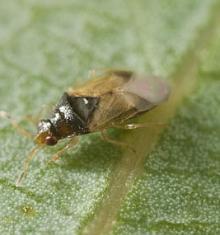 |
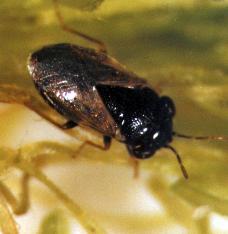 |
|||||||
Big eyed bug adult |
|||||||||
Orius adult - minute pirate bug |
|||||||||
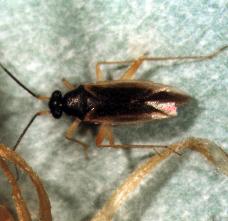 |
|||||||||
Damsel bug adult |
|||||||||
Black mirid - predatory bug |
|||||||||
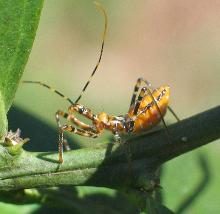
Assassin bug nymph
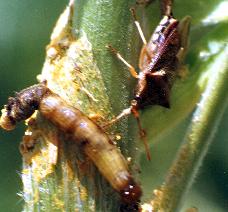
Predatory shield bug attacking large caterpillar
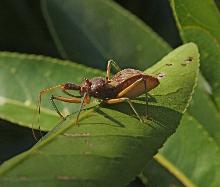
Assassin bug adult
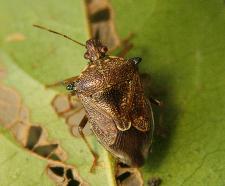
Predatory shield bug
